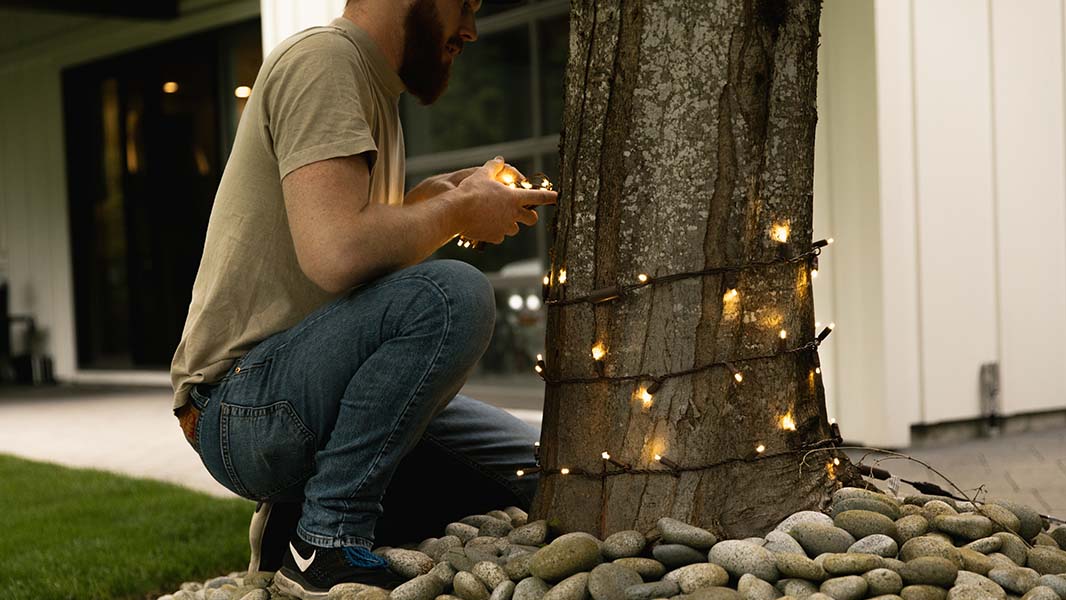String lights stopped working? Here’s how to troubleshoot a fix
Let’s face it, at times installing Christmas lights can be frustrating. Often it’s not as simple as just plugging them in, especially if you’re pulling out last year’s outdoor string lights to discover half the string is out. In this post we are going to go through some of the common problems you can run into and how to properly troubleshoot fixing your broken Christmas lights.
First, a quick explainer on how string lights work:
Understanding how these lights work is the first step to figuring out what’s wrong with them.
Each string is 2 parallel circuits, joined at the middle, and the ends. This means that one circuit is specifically for the lights, while the other circuit is for the power to continue on to the next string of lights, hence the 3 wires. It’s designed this way so that if one of the parallel circuits were to be severed, power can still continue on to the next set of lights.
What this means is that you are never going to see one diode (or bulb) out, it will always be half of the string, or the whole string.
3 Common Reasons Your String Lights Won’t Turn On
1. Co-axial adapter is faulty or the fuse is blown

Each coaxial adapter is outfitted with a fuse, this acts like a breaker in your home where, if there is a power surge, the fuse acts as a breaking point to cut that overflow of power from reaching your lights, potentially causing further damage. This is where you want to start when troubleshooting your lights. Begin by replacing the fuse, if the fuse blows immediately after connecting it to power, it means that your lights are faulty, either a string is severed, or there is a malfunctioning rectifier.
2. The lights are severed because copper wiring exposed

This is the most common issue and could be very noticeable or almost invisible. Check first if the wire is completely separated (that will be pretty obvious), and if not, inspect the wire for a small cut which could be exposing the copper wire to moisture.
If your wire is cut, the string won’t be acting as it should, and even a small knick from overuse or rodents could be the culprit. When using staples on your installation, make sure that you have not stapled through your wires! This can cause your copper wiring to be exposed to outside moisture.
3. Rectifiers are malfunctioning
There are rectifiers at the beginning, middle and end of each string, joining the parallel circuits together. Components in the rectifiers could become faulty over time, so if neither of the two problems above are the issue, this one might be the culprit.

String Light Troubleshooting Scenarios
1. What to do if the whole tree is out
First, and very importantly, make sure that your power supply is working properly.
The next step is to examine your coaxial adapters fuse.
Slide open the panel on the adapter and take a look. A healthy fuse will have a small thin silver line running through it. (Photo)
You’ll know your string lights’ fuse is unhealthy if it looks shattered.
If your fuse is shattered it means that something caused your lights to have an unsteady flow of power. Usually it’s because your string has a break somewhere and the copper has been exposed to moisture.
Your next step will be to replace the fuse, but if you do and the new fuse blows immediately, then you have to track down the string of lights that is causing that fuse to blow, and replace it.
If you are working on a tree, start by dividing the tree into sections, usually at the base of the branches, and use an extension cable to test each section, tracking down your faulty string.
2. What to do if half the tree is out
This usually occurs from one of the string’s rectifiers malfunctioning, halting the flow of power. Locate the string that is malfunctioning and replace it with a new one.
Keep in mind that if the 3rd rectifier (at the end of the string) is faulty, the string itself might be on, but the following string will not be receiving power properly, so the issue is actually with the string prior to the string that is out.
3. What to do if lights are out after a heavy rainfall or snowfall
Extreme moisture can cause havoc on your installations, and keep in mind that moisture levels tend to be higher the closer they are to the ground. If your connections are running along the ground, try raising the connections off the ground as much as possible. Even raising it 4 to 6 inches can show tremendous results to your displays!

